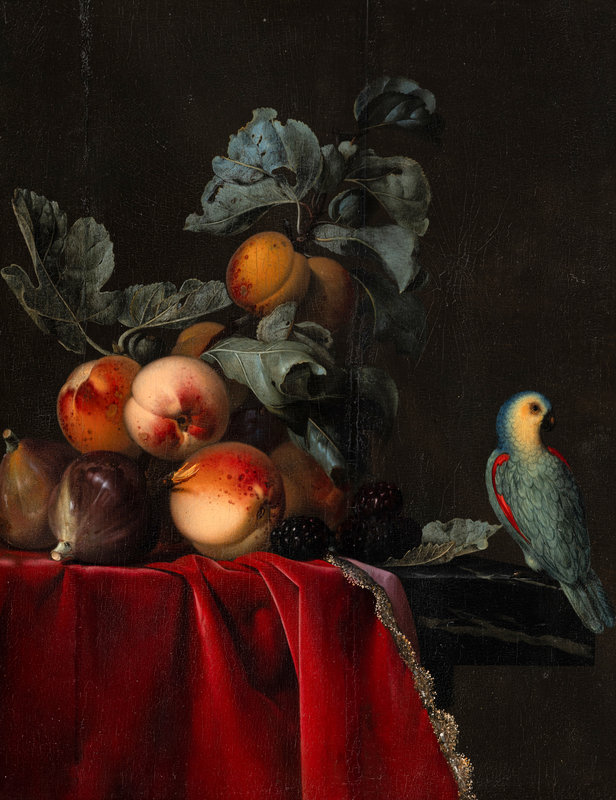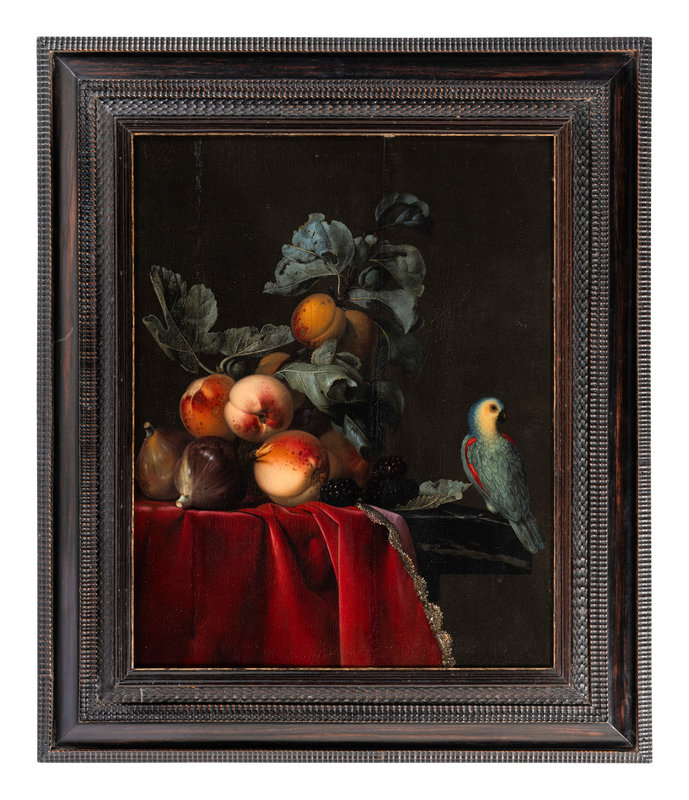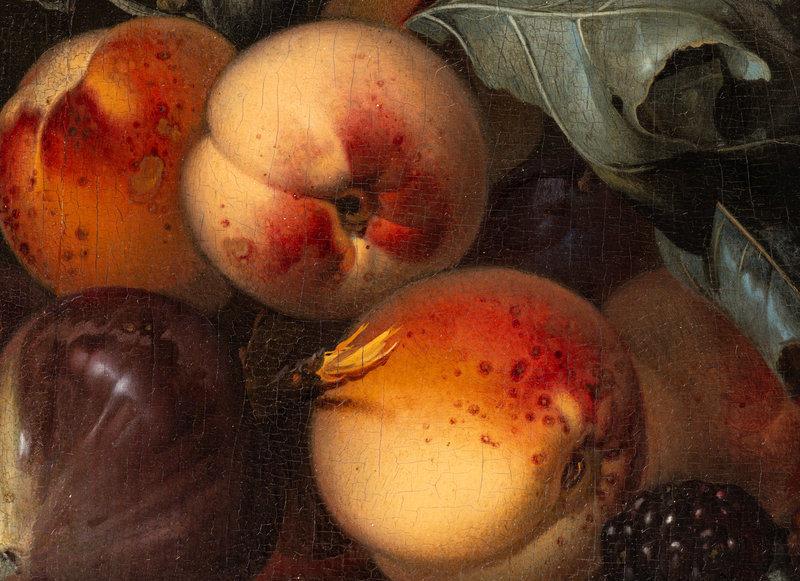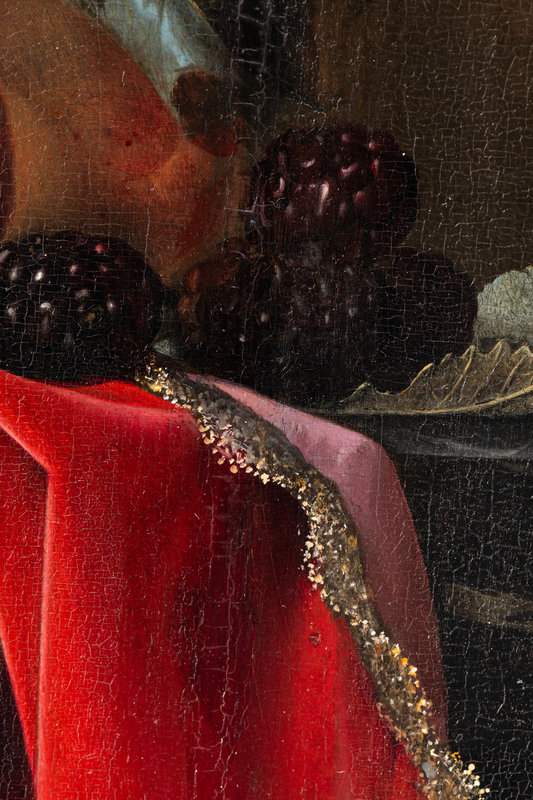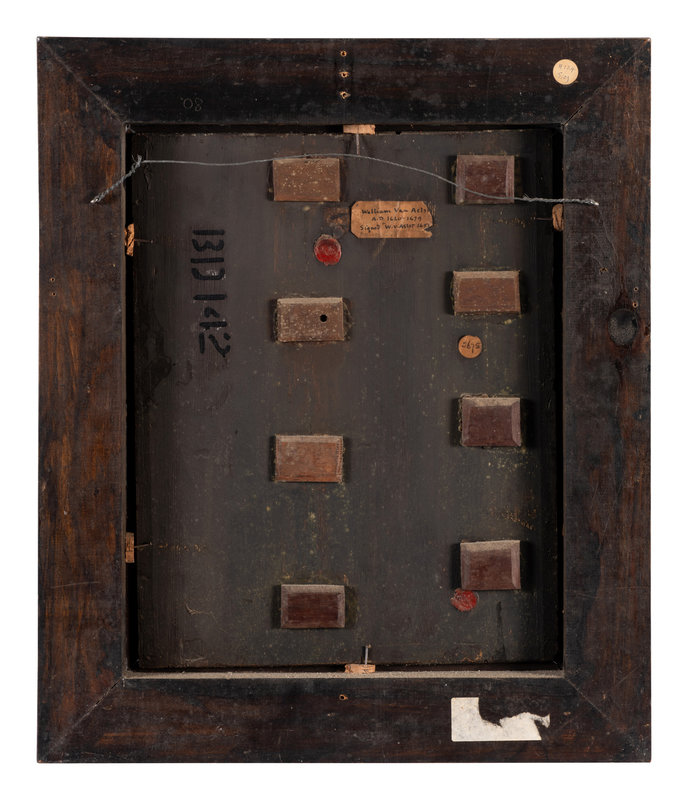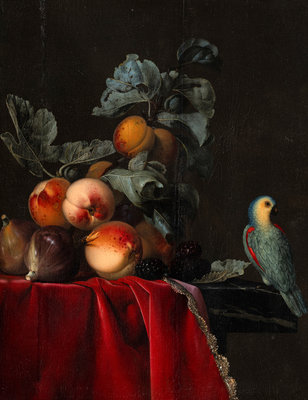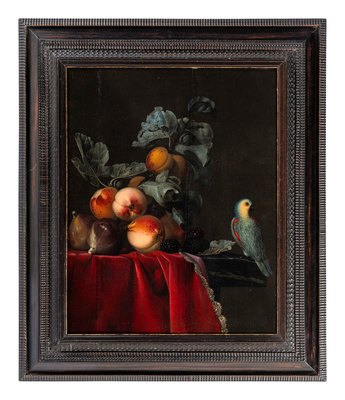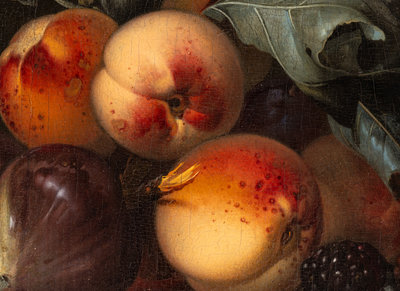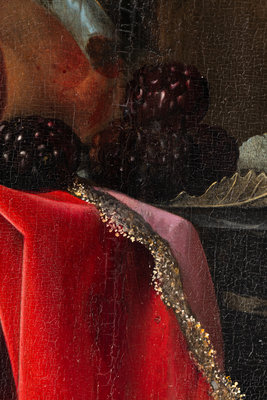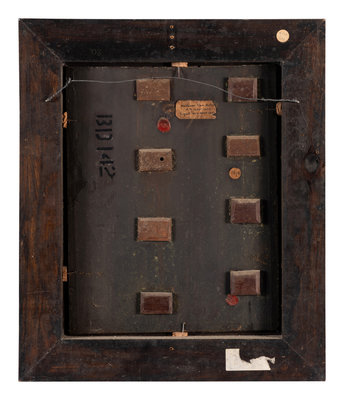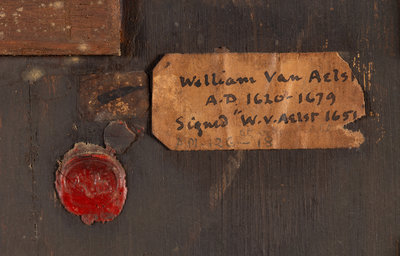Condition Report
Contact Information
Auction Specialists
Lot 9
Willem Van Aelst
(Dutch, 1627-1683)
Still Life with Peaches and a Perroquet, 1651
Sale 1283 - Canvas & Clay: The Collection of Judith and Philip Sieg, Bellefonte, Pennsylvania
Oct 26, 2023
10:00AM ET
Live / New York
Own a similar item?
Estimate
$30,000 -
50,000
Price Realized
$22,680
Sold prices are inclusive of Buyer’s Premium
Lot Description
Willem Van Aelst
16 1/4 x 12 3/4 inches.
(Dutch, 1627-1683)
Still Life with Peaches and a Perroquet, 1651
oil on panel
16 1/4 x 12 3/4 inches.
